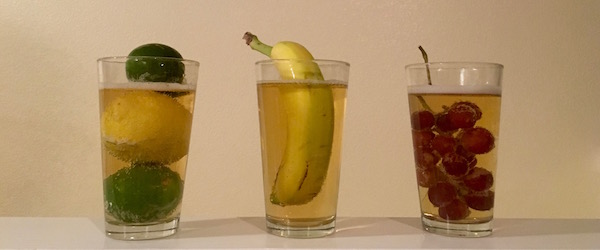Overall, I had a great time at the GABF. I tried lots of great beers and talked to a lot of very friendly brewers. There were still, though, a few trends I encountered that I would have just as soon missed…entirely…
Fruit Goses

I like goses. I think salt and sour can blend and complement each other really well. The same doesn’t apply to fruited goses. All of a sudden, peach, raspberry, cherry, and just about any other fruit you can name are making their way into goses. This is not a good idea.
I don’t know about you, but I don’t typically salt my peaches, raspberries, cherries, etc. Fruits and sours? Sure—these flavors are natural complements. Some fruits—like tart cherries—are even sour on their own. Fruits and salt? Not so much.
The worst offenders in this craze are the near ubiquitous purveyors of lime goses. Almost to a man they proudly claim their concoctions taste like margaritas. First, they don’t. second—and more importantly—why would that be a good thing? If I want a margarita, I’ll order one. If I order a beer, I’d like it to at least taste like something close to beer.
Sweet Additives
To be fair, I don’t generally like sweet beers. Some beers are sweet, though, I can respect that. I don’t respect beers that add sweetness in an effort to…well…I’m not really sure what they are trying to do. When you dump caramel, peanut butter, jelly, or chocolate into a beer, things can quickly run off the rails.
That doesn’t mean brewers can’t make good beers with theses ingredients. One of the more interesting strange beers I tried at the GABF was Funky Buddah’s No Crusts. It uses peanuts and lots of fruit to add peanut butter and jelly notes to a brown ale without turning it into a sugar bomb.
Hops for Hops’ Sake
Hops is still very much in the driver’s seat in the craft beer industry. It’s no surprise that IPA is the most represented category of beer at the GABF. That does not mean that every beer should be hoppy. If you want to make a cream ale or a Weiss beer, embrace the beer you’re making and don’t try to drown it with hops.
If you can’t get over your hop envy to make another kind of beer, stick to pale ales and IPAs. Aggressive hopping just doesn’t help a lot of beers and makes some flat our bad. When you’re dry hopped Belgian wit is giving you bitter bubblegum something has definitely gone wrong.
Random Barrel Aging
This is another one of those trends that are both good and bad. Wine barrel aging can add tremendous depth to a sour. Recycled hard liquor barrels can add great flavors to the right kinds of beers. The problem is both types of barrel aging can do just as much harm when used poorly.
Too many brewers seem to think that, if barrel aging is a thing, it must be great all the time for every beer. Nope. Whiskey barrels can easily overwhelm beers that don’t have strong body, and any oak can mute a beer’s hops with an unwelcomed burst of vanilla. Like any of the new trends in beer, you have to explore them with a purpose. Aging just to age is no better than hopping just to hop.

